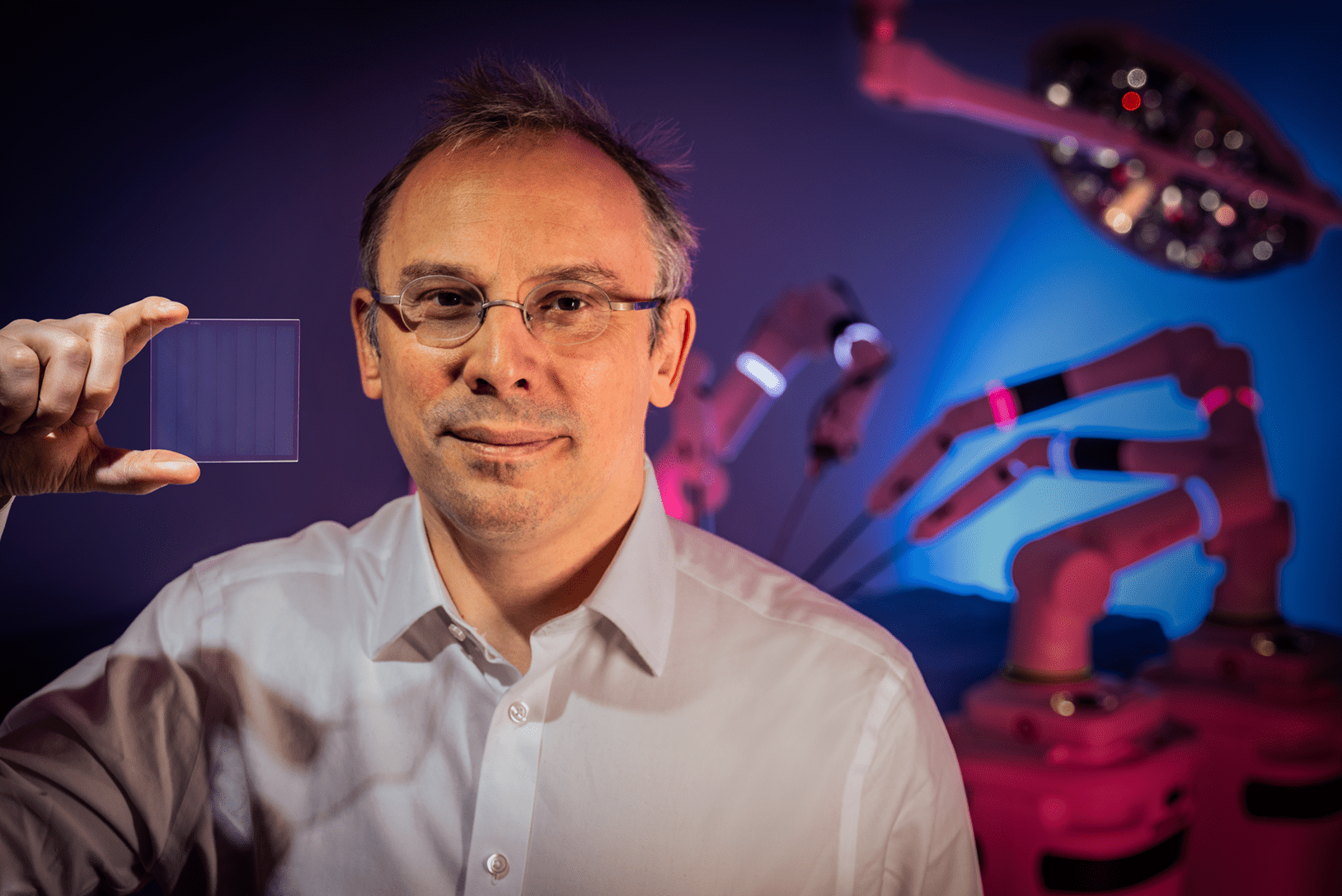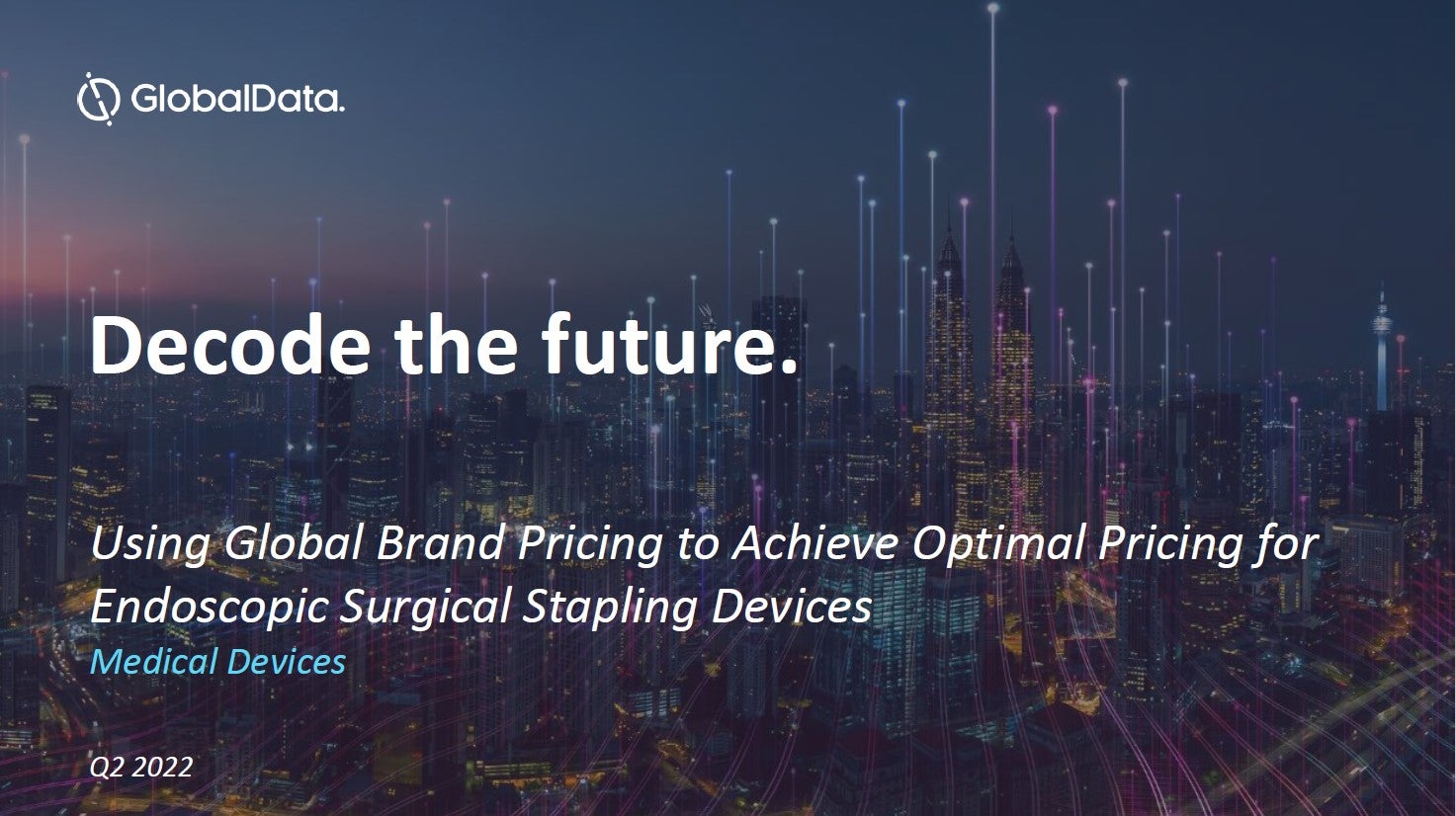
CMR Surgical first unveiled its Versius system in 2018. Pitched as a next-generation surgical robotic system to viral Intuitive Surgical’s da Vinci robot, the system began its first procedures under the UK NHS in February last year. Since then, the company has gone on to raise $600m in a Series D funding round to boost the commercialisation and development of its product.
Now, the firm has teamed up with Microsoft to innovate in a different area – data storage. Clinical information about procedures carried out using the CMR Surgical Versius robot is now being stored on a tiny glass platter, a proof-of-concept device being developed as part of Microsoft’s Project Silica trial.
How well do you really know your competitors?
Access the most comprehensive Company Profiles on the market, powered by GlobalData. Save hours of research. Gain competitive edge.

Thank you!
Your download email will arrive shortly
Not ready to buy yet? Download a free sample
We are confident about the unique quality of our Company Profiles. However, we want you to make the most beneficial decision for your business, so we offer a free sample that you can download by submitting the below form
By GlobalDataThe technology is designed to safely store data for more than 10,000 years and permits the preservation of surgery data, including procedural videos and critical telemetric data. Over the long term, CMR hopes to harness this information for future training and clinical study.
Medical Device Network speaks to CMR Surgical technology director Luke Hares about how the Project Silica platform works and what the company hopes to achieve with the data.
Chloe Kent: What is Project Silica?
Luke Hares: Project Silica is a collaboration between CMR and Microsoft. We’re collaborating because we’re both innovative companies in the Cambridge area and we both have considerable, although very different, interests in data.
The technology developed by Microsoft is for writing data in a pretty dense way onto panes of glass. They’re keen to find uses for that and to promote it as a storage medium.
CMR is a medical device company, we create surgical robots, but we’re also a digital company and we create and handle and deal with a lot of data. We’re obviously interested in developments in that field and Project Silica has a number of features that make it potentially interesting in the future.
CK: How exactly does the data make its way onto the glass?
LH: A fairly high-power pulse laser is used in very short durations to write the data in voxels, three-dimensional form, into layers on the glass. Then they read that back and use machine learning algorithms to identify the patterns of data that they read back.
It really is physically etched into the three-dimensional structure of the glass which is what gives it such great physical robustness, which is why it’s so interesting.
From the perspective of the user of the data, it appears in the same way as files on a hard drive. It’s just computer files written into a particularly secure format.
CK: Why did you decide to collaborate with Microsoft on the project like this?
LH: CMR isn’t directly interested in working out ways to store data ourselves, but we do generate a lot of it. It’s important data, it’s medical data, it can relate to both the clinical outcomes of procedures and how surgical procedures are performed and it’s therefore very valuable and frankly, we don’t want to lose any of it.
The interesting thing about Project Silica is that the technology provides an extremely robust and secure storage medium. It’s physically very robust and once the data is written it can’t be corrupted. You’re free from the fear of ransomware attacks and that sort of thing.
Since there’s tremendous insight available from looking at that data and we want to go back and look at it, not losing it is therefore very interesting to us.
CK: How is the data stored in this format kept secure? Why don’t you need to worry about ransomware?
LH: Your laptop hard drive could be hacked, in the sense that if someone got through the layers of encryption and everything else, they could read the data. But unlike your hard drive, this data can’t be changed.
That means that no one can go in and alter it, no one can encrypt it and then demand payment to unlock it.
Unless they’ve physically run off with the disks, we could always just take it out of one machine put it into another and read it again. It’s really a very robust medium for storing the very base data.
CK: What sort of information would you be looking to store and use through this technology?
LH: With Versius, we are introducing a complex and sophisticated medical tool to the market. It’s very important to us that we do so in a responsible way, ensuring that the platform is safe, effective and delivering on what it is meant to do by watching every single one like a hawk.
You always carry out post-market surveillance on your medical devices after you introduce them to the field, but rather than just do a limited number of studies we decided we wanted to introduce Versius as responsibly as possible.
That means we want to keep track of the clinical outcomes of every surgical procedure performed on the platform and ideally how it was used in those procedures as well. That gives us a great deal of security and knowledge that should anything, anywhere, not be going as well as it should, we can step in at the earliest possible opportunity to sort it out.
There’s also tremendous value in that data looking forward. With Versius, the system is always keeping track of how the robot arms are moving around and how the surgeons are using the controls.
That provides, for the first time ever, a complete record of exactly how the procedure was being performed, how the instrument tips were moving in 3D space and how the surgeon was controlling them. That’s enormously useful, because it means we can correlate the information contained there with the clinical outcomes.
Suddenly, you can see which techniques get even slightly better results than others. It’s also very useful to us from the perspective of pre-emptive services, so that we can start to see if parts of the robot arm need to be looked at because their performance isn’t quite what it should be, things like that.
CK: What is the value of all this data?
LH: We’re right at the very beginning of the process of working out what sort of information is contained within this data, how we can use that to improve patient care and how to make the insight from that data available to everyone who’s using a Versius.
This technology ensures that we won’t lose any of that information, ever.








